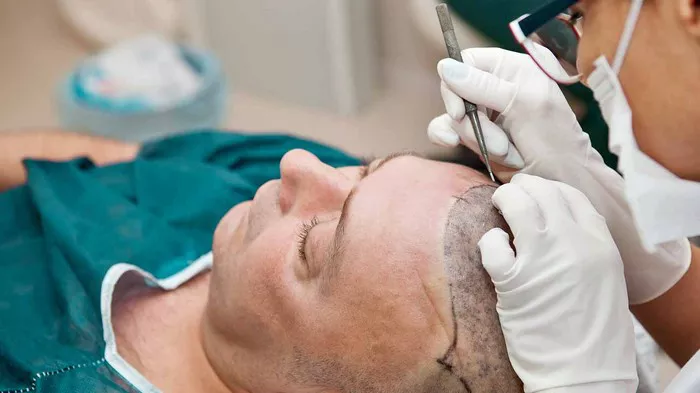Hair transplantation is a surgical procedure that involves moving hair follicles from one part of the body (the donor site) to a bald or balding part of the body (the recipient site). While it’s a relatively safe and effective way to restore hair growth, many patients wonder about the recovery process and when they can resume their normal activities, including sports like football. Playing football involves physical exertion, potential for head impacts, and sweating, all of which can affect the healing process after a hair transplant. In this article, we’ll explore the factors that determine when it’s safe to play football after a hair transplant and provide guidelines for a smooth recovery.
Understanding the Hair Transplant Procedure
Before delving into the recovery timeline, it’s essential to understand the hair transplant procedure itself. There are two primary techniques used in hair transplantation: Follicular Unit Transplantation (FUT) and Follicular Unit Extraction (FUE).
- Follicular Unit Transplantation (FUT): In FUT, a strip of scalp containing hair follicles is surgically removed from the donor area (usually the back or sides of the head) and dissected into individual follicular units for transplantation into the recipient area.
- Follicular Unit Extraction (FUE): FUE involves extracting individual hair follicles directly from the donor area using a small punch-like instrument and then transplanting them into the recipient area.
Regardless of the technique used, the transplantation process involves making tiny incisions in the recipient area to insert the harvested hair follicles. These incisions need time to heal properly to ensure successful hair growth.
Factors Affecting Recovery Time
Several factors influence the recovery time after a hair transplant, including:
1. Type of Transplantation: The recovery time may vary depending on whether you undergo FUT or FUE. FUT typically requires a longer recovery period due to the linear incision made in the donor area, which needs time to heal. FUE, on the other hand, involves smaller, circular incisions that heal faster.
2. Individual Healing Ability: Each person’s body heals at its own pace. Factors such as age, overall health, and immune function can affect how quickly you recover from surgery.
3. Postoperative Care: Following your surgeon’s postoperative instructions diligently can significantly impact your recovery time. Proper wound care, avoiding strenuous activities, and taking prescribed medications as directed are crucial for a smooth recovery.
4. Extent of Surgery: The size of the transplant area and the number of grafts transplanted can influence the recovery time. Larger procedures may require more time for healing compared to smaller ones.
5. Complications: While uncommon, complications such as infection or excessive bleeding can prolong the recovery process. It’s essential to follow up with your surgeon if you experience any unusual symptoms.
Considering these factors, it’s crucial to consult with your surgeon to determine when it’s safe to resume physical activities like playing football.
Timeline for Resuming Physical Activities
While there’s no one-size-fits-all answer to when you can play football after a hair transplant, most surgeons provide general guidelines for resuming physical activities. Here’s a rough timeline:
1. Immediate Postoperative Period (Days 1-7): During the first week after surgery, it’s essential to rest and avoid any strenuous activities, including sports. Your scalp will be tender, and you may experience swelling and scabbing in the transplant area.
2. First Two Weeks: In the second week post-surgery, you may gradually increase your activity level, but it’s still essential to avoid activities that could strain or injure the scalp. Light walking and gentle stretching are usually safe at this stage.
3. Weeks 2-4: By the third and fourth weeks post-surgery, most patients can resume light exercises such as jogging or cycling. However, activities that involve sudden movements, heavy lifting, or direct contact with the scalp should still be avoided.
4. Weeks 4-6: Around the fourth to sixth week mark, you may be able to start incorporating more strenuous activities into your routine, but it’s crucial to listen to your body and avoid anything that causes discomfort or puts undue pressure on the scalp.
5. Week 6 Onward: By the sixth week post-surgery, many patients are cleared to resume full physical activities, including contact sports like football. However, it’s essential to wear protective headgear and avoid any direct trauma to the transplant area.
Final Considerations
It’s important to remember that every patient’s recovery journey is unique, and your surgeon may adjust the timeline based on your specific circumstances. Additionally, even after you’re cleared to play football, it’s essential to ease back into it gradually and pay attention to any signs of discomfort or irritation.
Before resuming sports activities, it’s advisable to have a follow-up appointment with your surgeon to ensure that your scalp has healed adequately and there are no complications. They can provide personalized guidance based on your progress and help you make an informed decision about when it’s safe to return to football.
In conclusion, while playing football after a hair transplant is possible, it’s crucial to prioritize your recovery and follow your surgeon’s recommendations for a successful outcome. With patience, proper care, and communication with your medical team, you can enjoy both a full head of hair and your favorite sports activities.


